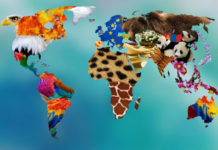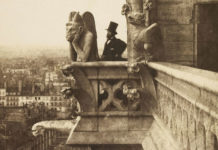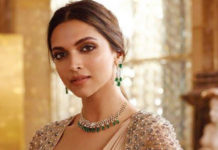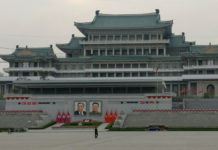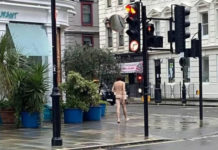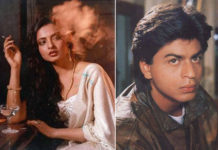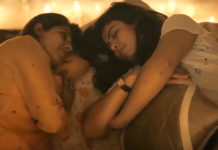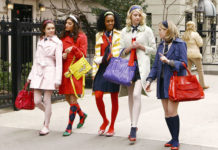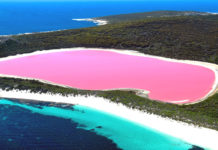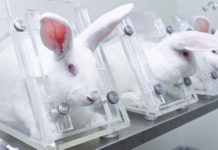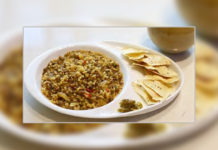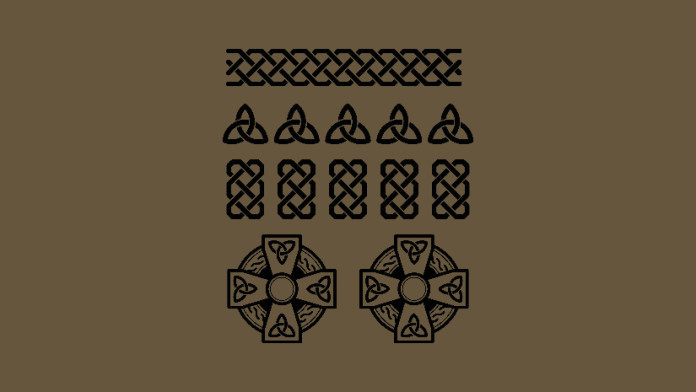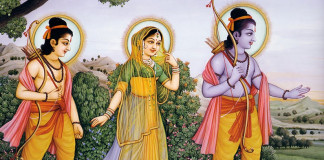There are very few written records of Celtic mythology and hence, there is quite little that can be surmised about the Celts and their beliefs and practices from the abundance of icons and symbols they so generously left behind. Celtic iconography abounds with symbols of spirit, emblems of gods and goddesses, and images from mythological tales.
 Here are some of the more popular Celtic symbols.
Here are some of the more popular Celtic symbols.
The Triquetra- Represents the three-fold nature of Goddess- Maiden, Mother and Crone and the balance of Mind, Body and Spirit.
 Triquetra in blue as part of an interlaced Christian Trinitarian decorative symbol.
Triquetra in blue as part of an interlaced Christian Trinitarian decorative symbol.
 Triquetra interlaced with circle as Christian Trinitarian symbol (a “Trinity knot”).
Triquetra interlaced with circle as Christian Trinitarian symbol (a “Trinity knot”).
 The cross of triquetras or Carolingian Cross.
The cross of triquetras or Carolingian Cross.
 The Sheela- na- Gig – There is controversy regarding the origin and meaning of the name, as the name is not directly translatable into Irish. Alternative spellings of “Sheela” may sometimes be encountered; they include Sheila, Síle and Síla. The name “Seán-na-Gig” was coined by Jack Roberts for the ithyphallic male counterpart of the Sheela which is fairly rare in Ireland but is much more common on the continent. The Sheela- na -Gig is a fertility figure.
The Sheela- na- Gig – There is controversy regarding the origin and meaning of the name, as the name is not directly translatable into Irish. Alternative spellings of “Sheela” may sometimes be encountered; they include Sheila, Síle and Síla. The name “Seán-na-Gig” was coined by Jack Roberts for the ithyphallic male counterpart of the Sheela which is fairly rare in Ireland but is much more common on the continent. The Sheela- na -Gig is a fertility figure.
 A Celtic cross is a symbol that combines a cross with a ring surrounding the intersection. The symbol is associated with Celtic Christianity, although it has older, pre-Christian origins. Such crosses form a major part of Celtic art. A standing Celtic cross, made of stone and often richly ornamented, is called a high cross or Irish Cross. Celtic crosses may have had origins in the early Coptic church.
A Celtic cross is a symbol that combines a cross with a ring surrounding the intersection. The symbol is associated with Celtic Christianity, although it has older, pre-Christian origins. Such crosses form a major part of Celtic art. A standing Celtic cross, made of stone and often richly ornamented, is called a high cross or Irish Cross. Celtic crosses may have had origins in the early Coptic church.
 The triple spiral or triskele is a Celtic and pre-Celtic symbol found on a number of Irish Megalithic and Neolithic sites, most notably inside the Newgrange passage tomb, on the entrance stone, and on some of the curbstones surrounding the mound.
The triple spiral or triskele is a Celtic and pre-Celtic symbol found on a number of Irish Megalithic and Neolithic sites, most notably inside the Newgrange passage tomb, on the entrance stone, and on some of the curbstones surrounding the mound.
 The Green Man is often perceived as an ancient Celtic symbol. In Celtic mythology, he is a god of spring and summer. He disappears and returns year after year, century after century, enacting themes of death and resurrection, the ebb and flow of life and creativity.
The Green Man is often perceived as an ancient Celtic symbol. In Celtic mythology, he is a god of spring and summer. He disappears and returns year after year, century after century, enacting themes of death and resurrection, the ebb and flow of life and creativity.
 Dara Celtic Knot – The meaning of the word, ‘Dara’ can be traced to an Irish word, doire which means ‘oak tree’. The Dara Celtic knot is associated with the root system of oak trees. Oak tree is the symbol of destiny, power, strength, wisdom, leadership and endurance. All these attributes therefore, got associated with the Dara Celtic knot. Roots of the oak tree represented in the form of Dara Celtic knot are symbolic of the great source of inner strength or divine resources we possess.
Dara Celtic Knot – The meaning of the word, ‘Dara’ can be traced to an Irish word, doire which means ‘oak tree’. The Dara Celtic knot is associated with the root system of oak trees. Oak tree is the symbol of destiny, power, strength, wisdom, leadership and endurance. All these attributes therefore, got associated with the Dara Celtic knot. Roots of the oak tree represented in the form of Dara Celtic knot are symbolic of the great source of inner strength or divine resources we possess.
Quaternary Celtic Knot – The quaternary knot symbol could thus, depict or indicate four directions (East, West, North and South). The symbol could also mean four elements of nature i.e. Earth, Fire, Water and Air. The fire festivals of Celts i.e. Samhain, Beltane, Imbolc and Lughnasadh could also be an interpretation of the quaternary symbol. The quaternary symbol could also be an indication of the treasures of Tuatha.
 The Eternity Knot – could be any of the celtic knot design patterns that has a closed path. It means that such Celtic knots neither have a beginning, nor an end. George Bain, a Celtic art teacher from Scotland attributed this meaning to the eternity knot.
The Eternity Knot – could be any of the celtic knot design patterns that has a closed path. It means that such Celtic knots neither have a beginning, nor an end. George Bain, a Celtic art teacher from Scotland attributed this meaning to the eternity knot.
 Five Fold Symbol – The five-fold symbol also represented a balance of the human nature. Many experts who have studied Celtic symbols and meanings, claim that this symbol represents the five basic elements of the universe, fire, water, sun, earth and air. Some experts however, believe that the middle fold is the universe, which is surrounded by fire, water, earth and air.
Five Fold Symbol – The five-fold symbol also represented a balance of the human nature. Many experts who have studied Celtic symbols and meanings, claim that this symbol represents the five basic elements of the universe, fire, water, sun, earth and air. Some experts however, believe that the middle fold is the universe, which is surrounded by fire, water, earth and air.
 Arwen – The arwen, also known as the symbol of three rays, was a symbol of the balance between male and female energy. The arwen, with three rays that were parallel to each other, was often used in jewelery. The first and last rays signified the powers of the ‘male’ and ‘female’ respectively. The middle ray signified the balance and equality of the other rays. Most of the experts of Celtic symbols and meanings, have interpreted that the arwen is a symbol that implies balance, between two opposing powers in the universe.
Arwen – The arwen, also known as the symbol of three rays, was a symbol of the balance between male and female energy. The arwen, with three rays that were parallel to each other, was often used in jewelery. The first and last rays signified the powers of the ‘male’ and ‘female’ respectively. The middle ray signified the balance and equality of the other rays. Most of the experts of Celtic symbols and meanings, have interpreted that the arwen is a symbol that implies balance, between two opposing powers in the universe.
 Single Spiral – The single spiral is one of the most common symbols of the Celtic culture. The spiral was actually the figure that had the spiral folds of the same line. This symbol stood for the radiation of ethereal energy.
Single Spiral – The single spiral is one of the most common symbols of the Celtic culture. The spiral was actually the figure that had the spiral folds of the same line. This symbol stood for the radiation of ethereal energy.
 Triskelion – The triskelion, was a prominent Celtic symbol that represented the concept of completion and progress. The symbol looked like a three legged wheel. According to the first derivation of the meaning, the triskelion, represents actions, cycles, progress, revolution and competition.
Triskelion – The triskelion, was a prominent Celtic symbol that represented the concept of completion and progress. The symbol looked like a three legged wheel. According to the first derivation of the meaning, the triskelion, represents actions, cycles, progress, revolution and competition.
 Circular Knots – As the name suggests, these knots are in circular shape emphasizing the continuity of life or eternity. It is for this reason that this Celtic knot is very commonly seen in wedding rings or other gifts exchanged between lovers that emphasizes the endless nature of their emotions for each other.
Circular Knots – As the name suggests, these knots are in circular shape emphasizing the continuity of life or eternity. It is for this reason that this Celtic knot is very commonly seen in wedding rings or other gifts exchanged between lovers that emphasizes the endless nature of their emotions for each other.
 The Celtic symbol for father daughter tells the story of Brighid who sat close to her dying father. As she waited she weaved a knot from rushes. Her father noticed and asked her what she was doing. She explained how each loop although individual is not able to be separated from the whole just as their relationship was interwoven so too were they wrapped up with those who would follow in the life after.
The Celtic symbol for father daughter tells the story of Brighid who sat close to her dying father. As she waited she weaved a knot from rushes. Her father noticed and asked her what she was doing. She explained how each loop although individual is not able to be separated from the whole just as their relationship was interwoven so too were they wrapped up with those who would follow in the life after.
 The Celtic knot symbolizing “Sisters” or “Sisterhood.”
The Celtic knot symbolizing “Sisters” or “Sisterhood.”

By: Archa Dave

